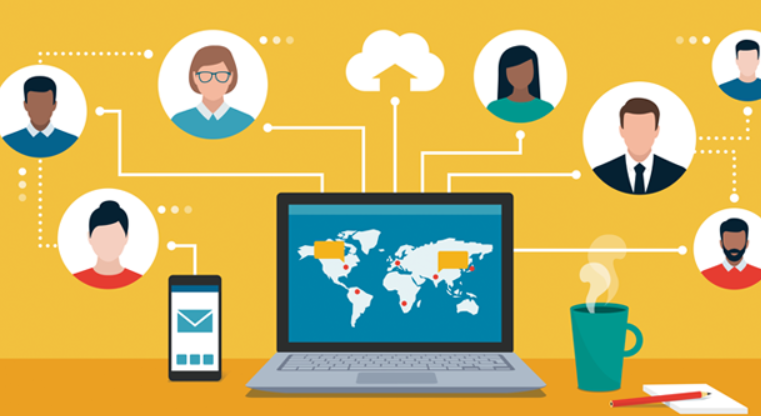
The Role of IT in Facilitating Remote and Hybrid Work Environments
The landscape of work has undergone a profound transformation over the past few years, with remote and hybrid work models becoming increasingly prevalent. The COVID-19 pandemic served as a catalyst for this shift, compelling organizations worldwide to adopt flexible work arrangements to ensure business continuity. As we move forward, it is evident that remote and hybrid work environments are here to stay, reshaping how businesses operate and employees perform their duties. Central to this transformation is Information Technology (IT), which plays a pivotal role in enabling, supporting, and optimizing these work models. This blog post explores the multifaceted role of IT in facilitating remote and hybrid work environments, highlighting the key technologies, strategies, and challenges involved.
The Foundation of Remote and Hybrid Work: Essential IT Infrastructure
Cloud Computing
Cloud computing is the cornerstone of remote and hybrid work environments. By providing on-demand access to a wide array of computing resources such as storage, processing power, and applications, cloud services enable employees to work from anywhere with an internet connection. Platforms like Microsoft Azure, Amazon Web Services (AWS), and Google Cloud Platform (GCP) offer scalable solutions that support remote access to critical business applications and data, ensuring seamless operations regardless of physical location.
Virtual Private Networks (VPNs) and Secure Access
Security is a paramount concern in remote work settings. Virtual Private Networks (VPNs) are essential for creating secure connections between remote employees and the company’s internal network. VPNs encrypt data transmitted over the internet, protecting sensitive information from potential cyber threats. Additionally, implementing multi-factor authentication (MFA) and Single Sign-On (SSO) solutions further enhances security by ensuring that only authorized users can access corporate resources.
Collaboration and Communication Tools
Effective communication and collaboration are vital for the success of remote and hybrid work models. IT departments facilitate this through the deployment of various tools and platforms. Video conferencing software like Zoom, Microsoft Teams, and Google Meet enable face-to-face interactions, while instant messaging apps such as Slack and Microsoft Teams support real-time communication. Project management tools like Trello, Asana, and Jira help teams coordinate tasks, track progress, and collaborate on projects seamlessly.
Enhancing Productivity and Engagement
Digital Workspaces
Creating a cohesive digital workspace is essential for maintaining productivity in remote and hybrid work environments. IT can integrate various applications and tools into a unified platform, providing employees with easy access to everything they need to perform their tasks efficiently. Solutions like Microsoft 365 and Google Workspace offer comprehensive suites that include email, calendars, document collaboration, and more, all accessible from a single interface.
Virtual Desktop Infrastructure (VDI)
Virtual Desktop Infrastructure (VDI) is another critical technology that supports remote work. VDI allows employees to access their desktop environments from any device, providing a consistent user experience regardless of location. This approach simplifies IT management and ensures that all users have access to the necessary applications and data, while also enhancing security by centralizing control over the desktop environment.
Employee Monitoring and Performance Management
To ensure accountability and measure productivity in remote and hybrid settings, IT departments can implement employee monitoring and performance management tools. These tools provide insights into how employees are utilizing their time, identify potential bottlenecks, and help managers provide timely feedback and support. However, it is crucial to balance monitoring with privacy considerations to maintain trust and morale among employees.
Addressing Challenges and Ensuring Compliance
Cybersecurity
The shift to remote and hybrid work models introduces new cybersecurity challenges. IT departments must stay vigilant and adopt robust security measures to protect against threats such as phishing attacks, malware, and data breaches. Regular security training for employees, along with the deployment of advanced threat detection and response systems, is essential to mitigate these risks.
Compliance and Data Privacy
Compliance with regulatory requirements and data privacy laws is another critical aspect of remote work. IT must ensure that all data handling practices adhere to relevant regulations such as GDPR, HIPAA, and CCPA. Implementing data encryption, access controls, and regular audits can help maintain compliance and protect sensitive information.
Technical Support and Troubleshooting
Providing technical support to remote employees can be challenging due to the dispersed nature of the workforce. IT departments need to establish efficient support channels, such as help desks and remote assistance tools, to promptly address technical issues. Additionally, offering training sessions and resources can empower employees to troubleshoot minor problems on their own.
Also Check
The Future of IT in Remote and Hybrid Work
As remote and hybrid work models continue to evolve, IT will play an increasingly significant role in shaping the future of work. Emerging technologies such as artificial intelligence (AI), machine learning (ML), and the Internet of Things (IoT) have the potential to further enhance remote work experiences by automating tasks, providing advanced analytics, and enabling smarter collaboration tools.
AI and Automation
AI and automation can streamline various aspects of remote work, from automating routine tasks to providing intelligent insights for decision-making. Chatbots and virtual assistants can handle customer inquiries, schedule meetings, and manage workflows, freeing up employees to focus on higher-value activities.
Advanced Analytics
Advanced analytics can provide deeper insights into employee performance, collaboration patterns, and overall productivity. By leveraging data analytics, organizations can identify trends, optimize processes, and make informed decisions to enhance remote work efficiency.
IoT and Smart Workspaces
The Internet of Things (IoT) can transform home offices into smart workspaces. IoT devices can monitor environmental conditions, optimize energy usage, and even enhance security by integrating with home security systems. These advancements can create more comfortable and efficient remote work environments.
Conclusion
The role of IT in facilitating remote and hybrid work environments is multifaceted and ever-evolving. From providing the necessary infrastructure and tools to ensuring security and compliance, IT departments are at the forefront of enabling flexible work arrangements. As technology continues to advance, the potential for further enhancing remote and hybrid work experiences is immense. By staying agile and embracing innovation, organizations can not only adapt to the changing landscape of work but also thrive in it.








